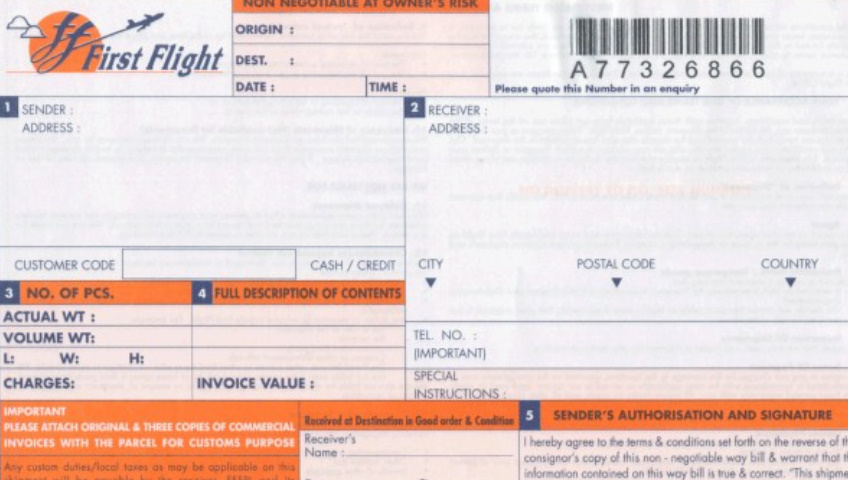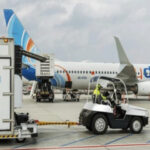1. Introduction to First Flight Tracking
Flight tracking has evolved from a niche interest of aviation enthusiasts to a mainstream tool used by passengers, airlines, and airports alike. Understanding the intricacies of tracking a first flight is crucial for both historical documentation and modern-day air traffic management.
1.1 Overview of Flight Tracking
Flight tracking involves monitoring an aircraft’s position, speed, and altitude in real-time. This data is usually collected from multiple sources such as radar, GPS, and satellites, providing detailed information about an aircraft’s journey. First flight tracking focuses on following the inaugural flight of a new aircraft or route, offering valuable insights for various stakeholders.
1.2 Importance of First Flight Tracking
Tracking the first flight is essential for several reasons, including verifying the aircraft’s performance, ensuring passenger safety, and contributing to historical records. Additionally, it plays a significant role in airline marketing strategies and provides aviation enthusiasts with an opportunity to witness a piece of history in the making.
1.3 How Flight Tracking Technology Has Evolved
The evolution of flight tracking technology reflects the broader advancements in aviation. From early manual methods to sophisticated digital platforms, flight tracking has become more accurate and accessible. The integration of GPS and satellite-based systems has revolutionized how we monitor flights, enabling real-time updates and global coverage.
2. History of Flight Tracking
Flight tracking has a rich history that mirrors the development of aviation itself. From the first attempts to monitor aircraft using visual methods to the advanced technologies of today, this journey showcases human ingenuity and the relentless pursuit of safety and efficiency in the skies.
2.1 Early Methods of Tracking Flights
In the early days of aviation, tracking flights relied heavily on visual observation and manual recording. Pilots communicated their positions via radio, and ground-based personnel tracked these reports. This method was prone to errors and limited by the range of communication.
2.2 Technological Advancements in the 20th Century
The 20th century saw significant advancements in flight tracking, particularly with the development of radar during World War II. Radar allowed for more accurate monitoring of aircraft, significantly improving air traffic control and reducing the risk of mid-air collisions.
2.3 Modern-Day Flight Tracking Innovations
Today, flight tracking is driven by a combination of radar, GPS, and satellite technologies. Innovations like ADS-B (Automatic Dependent Surveillance-Broadcast) enable aircraft to broadcast their position to ground stations and other aircraft, enhancing both safety and efficiency.
3. How Flight Tracking Works
Understanding how flight tracking works is fundamental to appreciating its role in modern aviation. The process involves various technologies that work together to provide a complete picture of an aircraft’s journey.
3.1 Radar-Based Tracking
Radar remains a cornerstone of flight tracking, especially in controlled airspace. Ground-based radar systems emit signals that bounce off aircraft, allowing controllers to determine their position, speed, and direction. This method, while effective, is limited by distance and terrain obstacles.
3.2 GPS-Based Tracking Systems
GPS-based tracking offers more precise location data by using satellites to triangulate the aircraft’s position. This system provides continuous updates and is less affected by geographical limitations, making it ideal for global flight tracking.
3.3 Satellite Tracking for Aircraft
Satellite tracking has expanded the reach of flight monitoring, particularly in remote and oceanic regions where traditional radar is ineffective. Satellites equipped with ADS-B receivers can track aircraft over vast distances, ensuring comprehensive coverage.
3.4 Real-Time Data Transmission and Analysis
The real-time transmission of flight data is critical for effective tracking. Data is collected from various sources, processed, and then relayed to tracking platforms, where it is analyzed and displayed. This process allows for immediate updates and alerts, enhancing situational awareness.
4. Tools and Platforms for First Flight Tracking
There are numerous tools and platforms available for tracking first flights, ranging from user-friendly apps to sophisticated systems used by professionals in the aviation industry.
4.1 Popular Flight Tracking Websites and Apps
Websites like FlightAware, Flightradar24, and Plane Finder offer real-time tracking services to the general public. These platforms provide detailed information about flights, including their routes, altitudes, and estimated arrival times, making them popular among travelers and aviation enthusiasts.
4.2 Specialized Software for Airlines and Airports
Airlines and airports use specialized software to track flights, manage air traffic, and ensure smooth operations. These systems offer advanced features like integration with air traffic control data, predictive analytics, and automated alerts.
4.3 Integration of Flight Tracking with Smart Devices
The integration of flight tracking with smart devices has made it easier than ever to monitor flights on the go. Apps for smartphones, tablets, and even smartwatches provide instant access to flight data, ensuring that users can stay informed wherever they are.
5. Benefits of Tracking a First Flight
Tracking a first flight offers several advantages, not just for the airline but also for passengers and aviation enthusiasts.
5.1 Ensuring Safety and Security
The primary benefit of tracking a first flight is ensuring safety. By monitoring the aircraft’s performance in real-time, any potential issues can be quickly identified and addressed, reducing risks and improving overall safety.
5.2 Enhancing Passenger Experience
Flight tracking enhances the passenger experience by providing accurate and timely information about the flight’s status. Passengers can receive updates on delays, expected arrival times, and gate changes, allowing them to plan accordingly.
5.3 Accurate Flight Status Information
Accurate flight status information is crucial for airlines and passengers alike. By tracking a flight in real-time, airlines can provide precise information to passengers, reducing uncertainty and improving customer satisfaction.
5.4 Contribution to Air Traffic Management
Flight tracking plays a vital role in air traffic management by providing real-time data to air traffic controllers. This data helps in managing the flow of air traffic, reducing congestion, and ensuring safe distances between aircraft.
6. Flight Tracking for Aviation Enthusiasts
Aviation enthusiasts have long been fascinated by flight tracking, using it as a tool to enhance their knowledge and enjoyment of aviation.
6.1 Using Flight Tracking for Hobbyists
For hobbyists, flight tracking provides a way to follow the movements of aircraft, observe patterns, and even engage in virtual spotting. It has become a popular activity, with enthusiasts tracking everything from commercial jets to military aircraft.
6.2 Virtual Spotting and Historical Data
Virtual spotting allows enthusiasts to track flights from the comfort of their homes, using data from tracking platforms to “spot” aircraft as they pass overhead. Historical data adds another layer of interest, enabling users to review past flights and significant events.
6.3 Connecting with Other Aviation Enthusiasts
Flight tracking has also fostered a sense of community among aviation enthusiasts. Online forums, social media groups, and dedicated platforms provide spaces for enthusiasts to share information, discuss trends, and connect over their shared passion for aviation.
7. Challenges in First Flight Tracking
While flight tracking offers many benefits, it also presents several challenges that need to be addressed.
7.1 Coverage Gaps in Remote Areas
One of the main challenges in flight tracking is the presence of coverage gaps in remote areas. While satellite tracking has improved coverage, certain regions, particularly over oceans and in polar areas, still experience gaps where tracking data is unavailable.
7.2 Data Accuracy and Delays
Ensuring data accuracy is another challenge, as delays in data transmission can lead to outdated or incorrect information. This is particularly critical in situations where real-time data is essential for decision-making.
7.3 Privacy Concerns and Regulations
Privacy concerns have emerged as flight tracking technology has become more widespread. Regulations vary by country, and there is ongoing debate about the balance between the benefits of tracking and the right to privacy for individuals and organizations.
8. Case Studies: Memorable First Flights
Throughout aviation history, several first flights have stood out, either due to their significance or the challenges they presented.
8.1 Tracking the First Commercial Flight
The first commercial flight, which took place on January 1, 1914, from St. Petersburg to Tampa, marked the beginning of a new era in transportation. Tracking this flight, even in retrospect, offers insights into how far aviation has come.
8.2 Landmark Flights in Aviation History
Other landmark flights, such as the first transatlantic flight by Charles Lindbergh in 1927 or the first supersonic passenger flight by Concorde in 1976, are also significant in the context of flight tracking. These flights were milestones in aviation history and are still studied today.
8.3 Modern Milestones in First Flight Tracking
In the modern era, first flights of new aircraft models, such as the Boeing 787 Dreamliner or the Airbus A380, are tracked meticulously, providing data that is crucial for manufacturers, airlines, and regulators.
9. Future Trends in Flight Tracking
The future of flight tracking looks promising, with several emerging trends set to enhance the way we monitor and manage air traffic.
9.1 The Role of AI and Big Data
Artificial intelligence and big data are poised to revolutionize flight tracking by offering predictive analytics, enhanced data processing, and more accurate forecasting. These technologies will enable more efficient air traffic management and better decision-making.
9.2 Integration with Autonomous Aircraft
As autonomous aircraft become more prevalent, their integration with flight tracking systems will be crucial. These systems will need to handle the complexities of autonomous flight, including real-time decision-making and conflict resolution.
9.3 The Next Generation of Satellites for Global Coverage
The next generation of satellites promises to provide even more comprehensive global coverage, eliminating current gaps and enhancing the accuracy and reliability of flight tracking data.
10. The Role of Airlines and Airports in Flight Tracking
Airlines and airports play a critical role in the success of flight tracking, using the data generated to improve operations and customer service.
10.1 How Airlines Utilize Tracking Data
Airlines use flight tracking data to monitor their fleets, optimize routes, and manage schedules. This data is also essential for handling delays, rerouting flights, and ensuring that aircraft are in the right place at the right time.
10.2 Airport Operations and Efficiency
Airports rely on flight tracking data to manage ground operations, including gate assignments, baggage handling, and passenger flow. Real-time data helps in reducing turnaround times and improving overall efficiency.
10.3 Customer Support and Real-Time Information Sharing
Providing real-time information to passengers is a key aspect of customer support. Airlines and airports use flight tracking data to keep passengers informed, reducing stress and enhancing the travel experience.
11. Regulatory Framework for Flight Tracking
The regulatory framework surrounding flight tracking is complex, involving international, national, and local regulations that govern how data is collected, transmitted, and used.
11.1 International Aviation Organizations and Standards
Organizations such as the International Civil Aviation Organization (ICAO) set global standards for flight tracking. These standards ensure consistency and safety across different jurisdictions and airspaces.
11.2 National Regulations and Compliance
Each country has its own set of regulations governing flight tracking. These regulations can vary widely and may include restrictions on data transmission, privacy laws, and requirements for aircraft operators.
11.3 Impact of Regulations on First Flight Tracking
Regulations can have a significant impact on the ability to track first flights. Compliance with these regulations is essential for ensuring that tracking systems operate legally and effectively.
12. Flight Tracking for Environmental Monitoring
Flight tracking also plays a crucial role in environmental monitoring, helping to reduce the aviation industry’s impact on the environment.
12.1 Measuring Aircraft Emissions and Fuel Usage
Tracking data can be used to measure aircraft emissions and fuel usage, providing valuable insights for efforts to reduce the environmental impact of air travel. This data is essential for both regulatory compliance and environmental stewardship.
12.2 Optimizing Flight Routes for Efficiency
By analyzing flight tracking data, airlines can optimize their routes to reduce fuel consumption and emissions. This not only benefits the environment but also reduces operational costs.
12.3 The Role of Tracking in Reducing Carbon Footprint
Flight tracking is integral to efforts aimed at reducing the carbon footprint of aviation. By providing accurate data on fuel usage and emissions, tracking systems enable more effective carbon management strategies.
13. Using Flight Tracking Data for Research and Analysis
Flight tracking data is a valuable resource for researchers and analysts, offering insights into various aspects of aviation.
13.1 Analyzing Air Traffic Patterns
Researchers use flight tracking data to analyze air traffic patterns, identify trends, and develop models for predicting future traffic. This data is crucial for improving airspace management and reducing congestion.
13.2 Research in Aviation Safety and Performance
Flight tracking data is also used in research focused on aviation safety and performance. By analyzing data from incidents and accidents, researchers can identify factors that contribute to safety risks and develop strategies to mitigate them.
13.3 Data-Driven Innovations in Aviation
The wealth of data generated by flight tracking systems is driving innovations in aviation, from new aircraft designs to more efficient air traffic management systems. This data is essential for the ongoing development of the aviation industry.
14. DIY Flight Tracking: Setting Up a Personal System
For those interested in setting up their own flight tracking systems, there are several options available, ranging from basic setups to more advanced systems.
14.1 Basic Tools and Equipment Needed
Setting up a DIY flight tracking system requires some basic tools and equipment, such as a receiver to capture ADS-B signals and a computer to process the data. Many enthusiasts start with simple setups and gradually expand their systems as they gain experience.
14.2 Software Options for DIY Enthusiasts
There are various software options available for DIY flight tracking, ranging from free, open-source programs to commercial software with more advanced features. These programs allow users to view and analyze flight data in real-time.
14.3 Legal and Technical Considerations
When setting up a DIY flight tracking system, it’s important to consider both legal and technical aspects. This includes ensuring compliance with local regulations, understanding the limitations of the system, and addressing any potential privacy concerns.
15. FAQs on First Flight Tracking
15.1 How can I track a flight in real-time? You can track a flight in real-time using websites like Flightradar24 or FlightAware, which provide live updates on an aircraft’s position, speed, and altitude.
15.2 What is the best app for tracking flights? Popular apps for tracking flights include Flightradar24, FlightAware, and Plane Finder. These apps are user-friendly and offer a range of features to suit different needs.
15.3 Can I track historical flights? Yes, many flight tracking platforms offer access to historical flight data, allowing you to review past flights and analyze patterns over time.
15.4 Is it possible to track flights globally? Yes, with satellite-based tracking systems, it is possible to track flights globally, including in remote and oceanic regions where traditional radar coverage is limited.
15.5 How accurate is flight tracking? Flight tracking is generally very accurate, especially when using GPS and satellite-based systems. However, some factors, such as coverage gaps or data delays, can affect accuracy.
15.6 What are the privacy concerns with flight tracking? Privacy concerns related to flight tracking include the potential misuse of tracking data and the need to balance transparency with individual privacy rights. Regulations vary by country, and ongoing discussions aim to address these issues.





